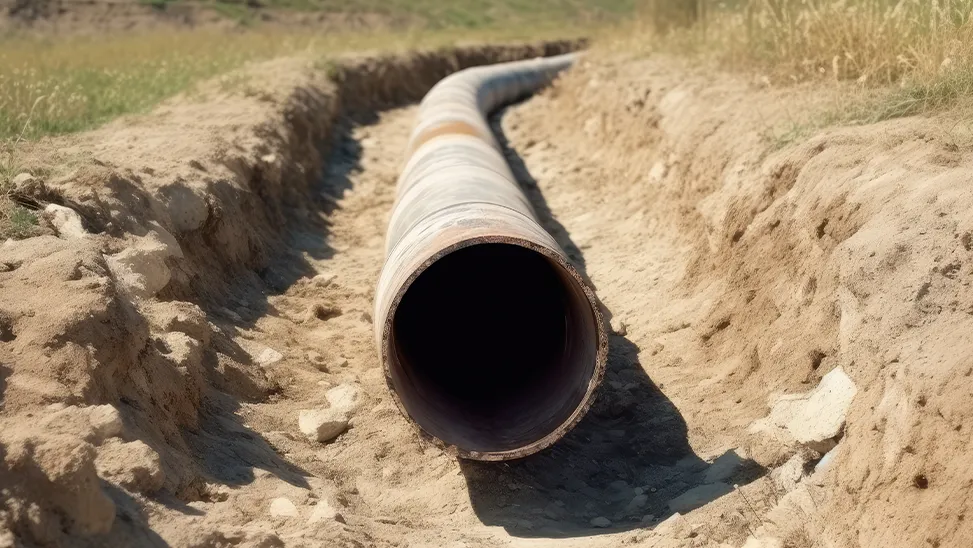
Choosing the right pipe material is crucial for ensuring the longevity and efficiency of your plumbing system. At Trenchless Pipe Repair of NH, we understand the complexities involved in selecting the appropriate piping that meets your needs, whether for new installations or repairs. This guide will help you navigate the various pipe materials available, their advantages and drawbacks, and how they integrate with trenchless repair technologies.
Common Pipe Materials and Their Uses
Different pipe materials are suited to different uses, depending on factors like the type of fluid being transported, the environmental conditions, and the required durability. Here’s a rundown of the most commonly used materials in plumbing:
- PVC (Polyvinyl Chloride): Widely used for residential water supply and drain lines due to its resistance to corrosion and chemicals.
- PEX (Cross-linked Polyethylene): Flexible and durable, PEX is often used for interior water plumbing systems because it’s easy to install and resistant to scale and chlorine.
- Copper: Known for its longevity and reliability, copper piping is commonly used for both hot and cold water supplies and refrigerant lines in HVAC systems.
- Cast Iron: Typically used for sewer or other drainage systems, cast iron is highly durable but can be susceptible to corrosion over time.
- Galvanized Steel: Once common, now less favored due to corrosion issues over time, it is still used in certain applications where high durability is necessary.
Each material comes with specific properties that make it more suitable for certain applications and less so for others.
Pros and Cons of Each Material
Understanding the advantages and disadvantages of each pipe material can help you make a more informed decision:
- PVC: Lightweight and inexpensive but sensitive to UV light and high temperatures, limiting its use to indoor applications.
- PEX: Extremely versatile and easy to install with minimal joints, but can be damaged by UV light if not properly protected.
- Copper: Highly durable and recyclable, with natural antibacterial properties, but more expensive and can be affected by acidic waters leading to pinhole leaks.
- Cast Iron: Very strong and excellent for sound reduction, but heavy, requiring significant support, and prone to rust.
- Galvanized Steel: Strong and resistant to mechanical damage, but can corrode internally over time which may reduce water quality and flow.
Each material offers unique benefits and potential drawbacks, which must be weighed according to the specifics of your installation or repair needs.
How Trenchless Repair Works with Different Materials
Trenchless repair technology is highly versatile, accommodating various pipe materials with different techniques:
- PVC and PEX: Techniques like pipe lining and bursting work well with these materials, allowing for effective repairs without extensive excavation.
- Copper: Copper can be tricky due to its rigidity, but trenchless slip lining techniques can often be used to restore these pipes effectively.
- Cast Iron: Trenchless methods such as cured-in-place pipe (CIPP) lining are ideal for repairing and strengthening aging cast iron pipes, enhancing their durability without replacing them completely.
- Galvanized Steel: Pipe bursting is often the best option for galvanized steel, as it allows for the replacement of old pipes with more corrosion-resistant materials.
Choosing the correct trenchless repair method depends on the material of your existing pipes and the specific conditions of your plumbing system.
Factors to Consider When Choosing Pipe Material
When selecting the right pipe material for your plumbing needs, several key factors should be considered:
- Water Quality: Certain materials can react negatively with the chemical composition of your water, so choose materials that are resistant to corrosion or degradation.
- Environmental Conditions: If your pipes are exposed to extreme temperatures or sunlight, materials like PVC or PEX that are sensitive to UV light may require additional protective measures.
- Longevity and Durability: Consider how long you need the piping to last without major repairs, and select materials known for their longevity like copper or cast iron.
- Cost: Budget constraints are also important; weigh the initial installation costs against long-term maintenance and repair savings.
Assessing these factors will help you make a choice that balances performance, durability, and cost-efficiency.
Expert Recommendations for Optimal Pipe Selection
Our team at Trenchless Pipe Repair of NH has extensive experience working with all types of pipe materials and can provide expert advice tailored to your specific needs. We consider all aspects of your plumbing system and the environmental factors affecting it to recommend the best materials and repair methods. Our goal is to ensure you receive a robust, reliable plumbing solution that meets your needs and budget.
Ready to Upgrade or Repair Your Plumbing System?
Choosing the right pipe material is crucial for the success of any plumbing project. Whether you’re installing new lines or need repairs, Trenchless Pipe Repair of NH can guide you through the process with expertise and care. Contact us today to discuss your plumbing needs and learn how our trenchless solutions can minimize disruption and maximize efficiency for your property.
Contact
Our Team Today
For more information about us or any of our trenchless pipe repair or replacement services, get in touch with us at Trenchless Pipe Repair of New England today. Call our team or fill out the form to schedule an appointment. Make your stress our stress today and let us help you get back to normal life with your family or running your business and serving your own clients and worry about more important things…like how the New England Patriots or Boston Red Sox are going to do next year.
